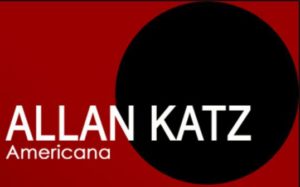It is sad to read about the vicissitudes of the Keno Brothers, characterized by a friend and ‘Antiques Roadshow’ stalwart as ‘the rockstars of the series.’ No question, that they are twins, relatively young, not precisely handsome but certainly distinctive in appearance, and, as the New York Times article detailing their problems has it, ‘telegenic’, they have over the years functioned to bring an interest in and attention to a trade that has been suffering for the lack of it. They are possessed of an intensely energetic delivery that while engaging, is at times so much of a muchness that it makes one wonder whether they have had too much coffee, or having had too much must needs make haste for the gent’s.
Still, what’s been said about them in the press is at the very least bad news for a trade that is often seen to operate in an environment of shadow and prolixity akin to the arcana that is the stock in trade of many of its dealers. The two have debts from unpaid auction invoices in the high six figures, and worse yet, it appears they colluded to run up the hammer prices on a number of the pieces knocked down to them. In the latter, they claim they had miscommunicated, that one brother was bidding online while the other was bidding by phone, and that neither was aware of the actions of the other. Really? Pull the other one- it has bells on it. In the former case, the unpaid invoices result from cash flow difficulties, with the clients who had commissioned the brothers to make these purchases on their behalf then reneging. With the prices for these pieces ostensibly run up by them, I shouldn’t wonder.
While this sort of high profile shenanigan does no good for an industry already on the hardest of hard times, I must say that this is hardly the first I’ve ever heard of shall we say missteps amongst old lags on the Roadshow. Witness, for instance, the fairly recent case of one of the valuers who waxed eloquently about a piece of crockery he thought was a treasure of mid 19th century Americana. Egg on the face quickly followed, when it was discovered soon thereafter the piece was a high school art project of such recent vintage that it was hardly dry.
For those of you who are regular watchers, you might be surprised to find that, with locations changing each week, and nearly all of the faces familiar from week to week, the experts pay all their own expenses- travel, lodging, eats- and are compensated at a rate of zero by the producers of the series. For those experts employed by an auction house- and this constitutes probably half or perhaps more- an appearance can engender interest and result in perhaps a consignment, and presumably this is part of the motivation for some of the private dealers, as well. For myself, this kind of public involvement has not much appeal, as we already get plenty of calls, asking for valuations of items gratis, and offers to sell us something that is totally unlike anything we would ever have in inventory and or could ever sell.
 Even across fields of collecting, the trade in art and antiques is a small fraternity, so inevitably, our paths would have crossed, sometimes almost daily, with a number of those on TV. A few, like Allan Katz, are possessed of the highest degree of knowledge and probity. Whatever Allan says, one could take to the bank. We do, though, know some others who are sadly greater in number with whom we have had, shall we say, a less than savory experience. A particular paintings expert, for example, is someone about whom I have already written, having formerly been our near neighbor. His neighborly and collegial mien manifested itself by badmouthing a painting we had for sale, expressing the opinion that it was not the real thing when in fact its provenance was clearly documented and contained within the artist’s catalogue raisonné.
Even across fields of collecting, the trade in art and antiques is a small fraternity, so inevitably, our paths would have crossed, sometimes almost daily, with a number of those on TV. A few, like Allan Katz, are possessed of the highest degree of knowledge and probity. Whatever Allan says, one could take to the bank. We do, though, know some others who are sadly greater in number with whom we have had, shall we say, a less than savory experience. A particular paintings expert, for example, is someone about whom I have already written, having formerly been our near neighbor. His neighborly and collegial mien manifested itself by badmouthing a painting we had for sale, expressing the opinion that it was not the real thing when in fact its provenance was clearly documented and contained within the artist’s catalogue raisonné.
